The history of Variable Frequency Drives (VFDs) dates back to the Industrial Revolution, when automation began to enter industries. The use of these powerful devices, which control the speed and torque of electric motors, has become a frequent practice in recent years for various applications, with no limits on energy and efficiency. The fact that VFDs are instrumental in energy-intensive processes and are cost-effective is a significant advantage of using VFDs in modern automation and industrial processes. This blog will elaborate on the different kinds of VFDs that exist, making specific attention to their individual characteristics, applications, and advantages. In the end, you would have achieved the best and most efficient operational process by using suitable devices, making you the most reliable and controlling person of the system in this particular way.
Introduction to Variable Frequency Drives
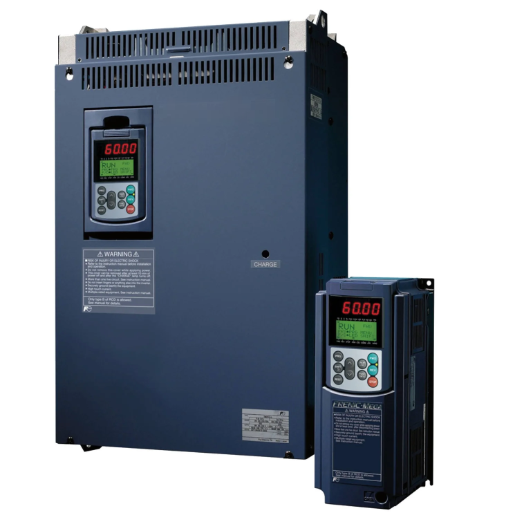
Variable Frequency Drives (VFDs) are an example of electronic devices whose main task is to handle the electric motor’s velocity and effort smartly by regulating the motor’s input frequency and voltage. They have gained their importance in the industry sector as VFDs significantly economize energy use, enhance the process control, and at the same time diminish the machinery wear. As a result of the speed control, they can offer VFDs, for example, more efficient applications in conveyors, pumps, and HVAC systems. Their energy-saving feature, combined with the performance boost, makes the VFDs crucial to the high-tech industrial and commercial sectors of our time.
What is a Variable Frequency Drive?
The mechanism underlying Variable Frequency Drives is that they modify the power fed to the electric motor and, more specifically, adjust the input voltage and frequency. The process is generally performed in three stages: rectification, intermediate DC bus smoothing, and inversion. At first, the AC power is transformed into DC power by the rectifier. After that, the DC power is cleaned up and stored on the DC bus, which helps reduce power fluctuations and ensure a stable supply. Ultimately, the inverter part will change the DC power to AC power at the needed frequency and voltage. VFDs manage the motor’s speed and torque by controlling these outputs precisely, ensuring the motor’s performance aligns fully with the application’s requirements. The adaptive feature significantly enhances the energy efficiency of the motor and the overall system precision in various industrial and commercial applications.
Importance of VFD in Motor Control
Variable Frequency Drives (VFDs) are crucial in controlling motors, allowing them to operate with less power and better performance. They make standard mechanical throttling systems unnecessary, similar to how different fluid flow valves control without stopping the engine. Motors controlled with VFDs consume significantly less electricity, particularly in HVAC systems and other electric motors that are irregularly loaded. There have been cases proving that a mere 20% reduction in motor speed can cut down power consumption by half due to the relationship between power consumption and motor speed. Moreover, by using the VFDs as the start and run motors in a soft way, the energy consumed by the system at t0 and during operation is reduced, potentially extending the equipment’s lifespan. So, the factors mentioned above combined make VFDs the only choice for various industry applications like manufacturing and utilities, where the demand for precision, reliability, and durability is very high.
Basic Components of VFD
| Component | Description |
|---|---|
| Rectifier | Converts AC to DC power |
| DC Bus | Stores and smooths the DC voltage |
| Inverter | Converts DC back to variable AC power |
| Control Circuit | Manages speed, torque, and motor operation |
| Input Filter | Reduces electrical noise from AC power supply |
| Output Filter | Protects the motor from voltage spikes |
| Cooling System | Prevents overheating during operation |
| Protective Circuits | Safeguards against over-voltage or faults |
| User Interface | Enables manual configuration and control |
| Feedback Mechanism | Ensures stable and precise motor control |
Types of Variable Frequency Drives
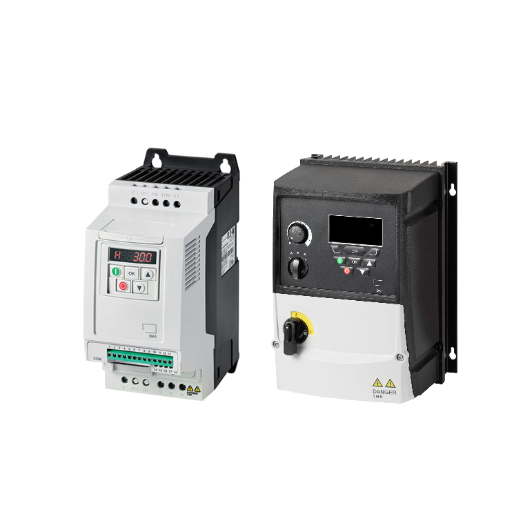
Voltage Source Inverter (VSI) Drives
The most common Variable Frequency Drives are VSI drives. They control the motor’s speed and torque using a DC-voltage source, making them a most reliable and cost-effective device.
Current Source Inverter (CSI) Drives
The other option is CSI drives, which use a DC source for motor control. They are extraordinary in the high-power sector, and the only reason they are not that common is the complex issues they come with.
Pulse Width Modulation (PWM) Drives
Another very well-known option is the PWM drive, which is among the most efficient machines. They are widely used, mainly in industrial sites, due to their precise control over the motor’s speed and torque with minimal energy losses.
Direct Torque Control (DTC) Drives
DTC drives are the ultimate in motor function because they manage the motor torque and flux directly. They were developed for high-performance and fast application industries.
Detailed Analysis of VFD Types
Voltage-Source Inverter (VSI)
Voltage-Source Inverters (VSIs) are a crucial component of the power electronics industry. They are frequently used in applications that are controlled and produce a standard output, such as motor drives, rooftop solar systems, and UPS systems. What they do is start by converting a DC power supply, which allows them to control the frequency and output voltage, and to maximize energy efficiency over long-distance transmission. This technology is thus a good pick for the times of change, which is why it is often seen with induction motors and renewable energy systems, e.g., grid-connected solar photovoltaic/wind power installations. The technology linked to VSI has had significant developments in the past few years, focusing on using more than solar cells, reducing power harmonics, and improving heat dispersion. Thus, VSIs are now essential in the energy optimization and sustainability industries.
Current-Source Inverter (CSI)
A Current-Source Inverter (CSI) works by converting a constant DC into an AC waveform using switching devices such as thyristors or insulated-gate bipolar transistors (IGBTs). Unlike Voltage-Source Inverters (VSIs), CSIs are powered by a DC source placed in series with an inductor, allowing the current to remain constant. This characteristic of the design makes CSIs the system of choice for applications requiring current control robustness and high reliability, such as induction heating, synchronous motor drives, and large industrial systems.
CSI systems are beneficial due to their inherent short-circuit protection from a controlled current source, which minimizes damage risk during operation and is one of their significant advantages. On the other hand, the latest CSI technological evolution and reduced switching losses, which resulted in an increase in the frequencies at which the system operates, helped improve the overall system efficiency. Big physical size and more significant initial cost make the traditional VSI seem small and cheaper, but this does not happen all the time because the modern improved CSIs are being used more and more despite the above-mentioned aspects in industries where precision and longevity are given more importance, such as renewable energy systems, where continuous stable power is a must.
Direct Torque Control (DTC)
Direct Torque Control (DTC) is an immensely efficient technique in VFD (Variable Frequency Drives), employing a three-phase AC motor to control torque and speed. DTC, unlike the conventional control methods, does not need any transformation on the coordinate or modulation; instead, it optimally manages stator flux and motor torque through the very fine-tuning of voltage vectors. These methods enable quick, dynamic responses with reduced complications and a simpler implementation process.
Advancements in DTC technology have been very recent, focusing mainly on issues related to high torque ripple and acoustic noise, in addition to improving energy efficiency. Modern DTC systems typically adopt space vector modulation (SVM) and predictive control algorithms, thus enhancing the global performance and making the transition of the torque smoother. DTC is frequently utilized in industrial sectors such as automation, transportation, and renewable energy, as it can offer the same performance under different load conditions. The features of flexibility and reliability make it a sought-after technology in applications that need both precision and efficiency.
Common Applications of VFDs
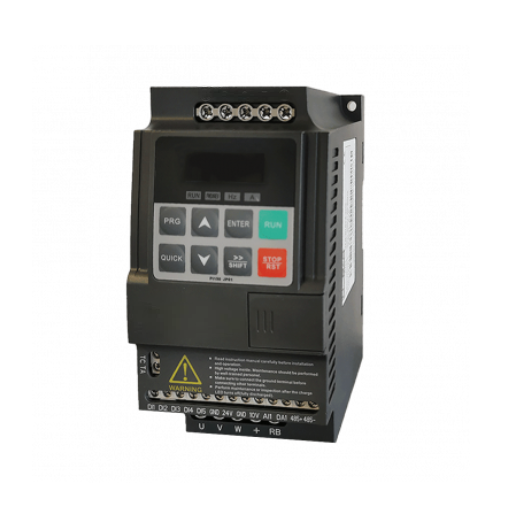
🏢 HVAC Systems
An HVAC system uses a variable frequency drive (VFD) to adjust fan and pump speeds for maintaining appropriate airflow and temperature, thereby saving energy in both the residential and commercial sectors.
⚙️ Industrial Machinery
The industrial process involves using variable frequency drives to regulate motor speed and torque output, thereby improving the productivity and accuracy of machines such as conveyors, mixers, and extruders.
💧 Pumps and Compressors
It may also be used to enhance the performance and energy efficiency of the pumps employed in the water treatment, industrial wastewater, irrigation, and waste oil & gas plants by automatically varying the motor speed.
🌱 Renewable Energy
VFDs play a significant role in the renewable energy industry as they are crucial components of wind and solar power systems, directly converting and regulating energy to enhance the system’s overall efficiency and reliability.
🚊 Transportation
Electric motors can be used in the transportation sector, such as in electric vehicles, elevators, and escalators, due to their high efficiency and low noise generation.
AC Drives in Industrial Applications
Modern industrial plants use AC drives thoroughly, a technology that offers superb control of the motor speed, torque, and energy consumption. They achieve a remarkable reduction in energy use and operational expenses by appropriately tuning the motor to meet the process needs. For instance, the ducting and ventilation system of a building can be fine-tuned with the help of an AC drive controlling the fan speed, which is more efficient compared to the old constant speed system.
Moreover, the reliance and application of AC drives have now expanded to include IoT system integration, predictive maintenance features, and many other distinguished functionalities and reliability enhancements. These drives, equipped with diagnostic functions, can directly control operations and provide early warnings of equipment troubles, minimizing downtimes and repair issues. AC drives are designed to conform to industrial standards and environmental regulations, thereby enabling mountability and the ease of establishing dependencies virtually indefinitely in sustainable industrial operations. Their flexible application and energy-saving capabilities make them valuable resources for diversified industrial operations.
Variable Speed Drives in HVAC Systems
The primary function of Variable Speed Drives (VSDs) is to enhance the HVAC system’s performance and efficiency. The motor’s speed will be adjusted to match the exact demand for heating, ventilation, or cooling, which will be controlled by these VSDs, resulting in a significant reduction in energy consumption. It is shown that integrating VSDs can save up to 50% of energy, especially in systems with different load demands. In addition, these drives can reduce wear and tear on machines by eliminating the need for sudden and frequent starts and stops, thereby prolonging the life expectancies of motors and other system parts.
In addition to energy and durability advantages, VSDs are indeed significant contributors to the improvement of indoor air quality through maintaining exact airflow control. They also allow HVAC systems to operate more silently, thereby offering comfort to residential, commercial, and industrial spaces. Moreover, the inclusion of VSDs in systems helps conform to the latest construction laws and energy efficiency standards, thereby becoming a crucial factor in eco-friendly and cost-effective HVAC system design.
Inverter Drives for Electric Motors
Inverter drives, also referred to as variable frequency drives (VFDs), are critical in controlling electric motors. When the speed and torque of the motor change according to the load requirements, the inverter drives can decrease energy consumption and increase operational efficiency. Inverter technology has been among the most developed in recent years, and now it provides excellent precision control, which results in smoother motor operation and less mechanical stress. The benefit of this is not only that the equipment’s life is prolonged, but also that maintenance costs are reduced when used in industrial and commercial applications.
Moreover, the use of inverter drives greatly helps in saving energy in different fields such as manufacturing, water treatment, and HVAC systems. The percentage of energy usage decrease with the use of inverter drives can go as high as 50% in applications with varying loads, resulting in significant cost savings and simultaneously reducing the overall carbon emission footprint. With their ability to seamlessly integrate with modern digital control systems, including real-time monitoring and remote diagnostics, they are indispensable in innovative and sustainable industrial solutions.
Understanding VFD Control Techniques
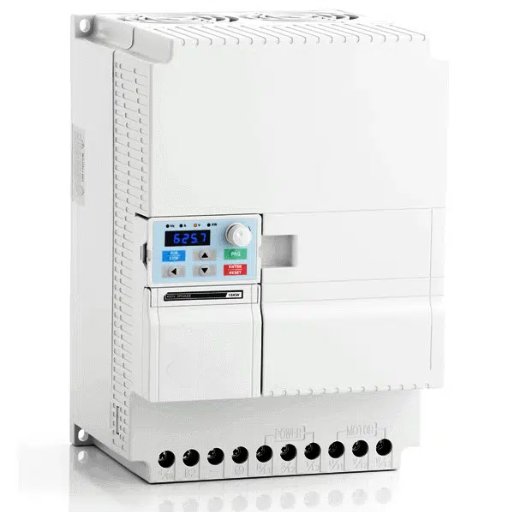
Variable Frequency Drives (VFDs) use different control methods to control motor speed and torque efficiently. The well-known techniques are:
Volts/Hertz (V/f) Control
This is a very uncomplicated and very often applied technique. It is an arrangement that not only restricts the voltage-to-frequency ratio to static limits but also fosters the dynamic stability of an induction motor. V/f control is most suited to applications where performance requirements are comparatively moderate.
Vector Control (Field-Oriented Control)
This is a very modern method that offers superior motor torque and speed control through the decoupling of the magnetic field and current control. It is a perfect choice for very high-performance and dynamic applications, such as precision machinery or robotics.
Direct Torque Control (DTC)
The DTC method of control is essentially the direct manipulation of a motor’s torque without requiring sophisticated motor models, feedback systems, or similar components. It is a technology that brings fast response and high efficiency to the same application, augmenting industrial settings with these features.
There are different benefits for each control method, and the choice depends on the varying operational speed, torque accuracy, and energy-saving specifications of the application. Having thorough knowledge of these techniques would make a correct VFD selection possible for any given operation.
VFD Controller Basics
VFD (Variable Frequency Drive) controllers are the lifeblood of modern motor-driven systems in industrial processes, providing precise control of motor speed and torque. VFD lets you control motor-supplied frequency and voltage adjustments, making it possible to achieve higher energy efficiency and reduce mechanical stress in applications like HVAC systems, conveyor belts, and industrial machinery. The latest VFD technology is specifically designed to save more energy, eliminate more harmonics, and integrate seamlessly with IoT systems that monitor in real-time. Still, the future is made of computer algorithms and robots that continue the VFD journey by offering predictive maintenance programs that examine the system to identify potential issues early, years before they become severe. The changes are rightly positioning VFD controllers at the forefront of the innovative and sustainable industrial operation era.
Control Drives and Algorithms
Modern industrial systems rely heavily on control drives and advanced algorithms to work rather than running without them. Due to the massive data and complex computations involved, these algorithms are becoming significant for real-time optimization of performance and energy savings. If industrial processes are equipped with control strategies like model predictive control (MPC) and machine learning, the regulation of the operational side —such as speed, torque, and power needs —is exact. The process not only saves energy but also better supports product quality and process reliability. Furthermore, thanks to access and the ability to conduct rapid and systematic analyses of operational data, intelligent decision-making is a significant factor in reducing downtime and improving system productivity to its full potential. The ongoing transition of control drives and algorithms strengthens their role in the industrial sector to stimulate innovation and sustainability through automation.
Efficiency and Performance Considerations
Efficiency and productivity are the primary considerations whenever we talk about optimizing a system. Algorithms that simulate modern control drives are complex to list. Yet, they excel at enabling machines to adjust their power levels in real time, ensuring energy efficiency across different operational states. Research shows that if we choose to use advanced motor control technologies, the outcome can be up to a 30% reduction in energy use compared to more conventional systems. That, in turn, means a benefit in both the direct costs and the environment. Also, these high-performance systems now incorporate real-time monitoring and diagnostic tools, making a significant difference in operational clarity. This, in addition to enhancing system uptime, allows planned maintenance to be addressed in time, thus eliminating instances of unplanned downtime. The trend of scalable and modular designs makes it easier for users to develop systems that perfectly suit their industry requirements. As a result, peak performance is expected without impacting the resources.
Output Filters and Their Importance
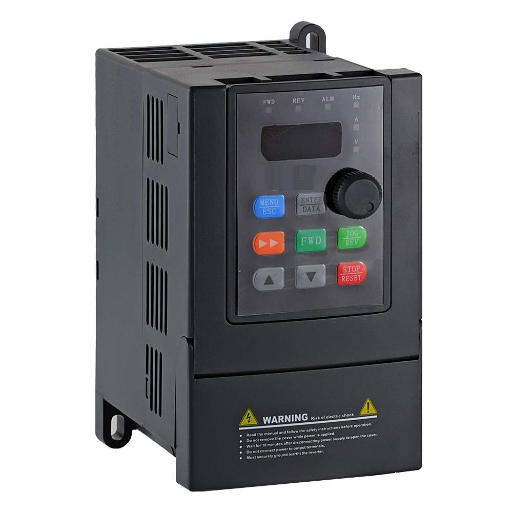
Output filters have an essential function: to ensure the system outputs are reliable and of good quality. They are designed to eliminate unwanted noise, stabilize performance, and provide the user with clean and clear results under various operational conditions. They help increase system efficiency and extend the life cycle of equipment, in addition to their usual duty of protecting downstream equipment by improving signal clarity. They are essential, particularly in cases where high accuracy and control are critical, such as in the healthcare, manufacturing, and telecommunications industries. Moreover, with the incorporation of the output filters, the systems can consistently perform to the standard and minimize errors and disruptions.
Types of Output Filters
| Type of Output Filter | Key Features | Typical Applications | Pros | Cons |
|---|---|---|---|---|
| Low-Pass Filter | Blocks high-frequency signals | Power supplies, audio systems | Simple design, cost-effective | Limited high-frequency control |
| High-Pass Filter | Blocks low-frequency signals | Signal processing, RF applications | Ideal for removing noise | Does not improve low frequencies |
| Band-Pass Filter | Allows specific frequency range | Telecommunications, medical devices | Precise frequency control | Complex design, higher cost |
| Band-Stop Filter | Blocks specific frequency range | Noise reduction, radio systems | Removes interference effectively | May affect signal quality |
| Active Filters | Requires external power supply | Amplifiers, oscillators | High precision, adjustable | Requires power, more components |
| Passive Filters | Uses resistors, capacitors, inductors | Basic AC/DC circuits | No external power needed | Less flexible, frequency-dependent |
| LC Filters | Combines inductors and capacitors | Industrial electronics, power grids | High efficiency | Bulky size, heavy components |
| RC Filters | Combines resistors and capacitors | Consumer electronics, signal timing | Compact and lightweight | Limited performance at high currents |
| Butterworth Filter | Flat passband response | Audio processing, control systems | Smooth frequency response | Less sharp cutoff |
| Chebyshev Filter | Steep roll-off response | Telecommunications, radio filters | High selectivity | Uneven frequency response |
Benefits of Using Output Filters
✓ Noise Reduction
Output filtering is the primary means of their cleaner operation, suppressing hazardous parts so that audio and telecommunication applications can benefit the fullest. Jointly reducing high-frequency components, more importantly, reduces the distortions and interferences that originate in the noise.
✓ Improved Signal Integrity
The signal quality is maintained, and the signal issue is addressed by these filters rather than affecting the first two harmonics. There are no other two harmonics, and the chosen frequencies are the only ones to pass through. Such a procedure is a must for sensitive signal architecture, as is the case with radar systems and medical instruments.
✓ Enhanced System Efficiency
The system’s efficiency is boosted by the filters, which also manage power dissipation caused by noise and other signal issues. Consequently, power-sensitive applications can depend on the signal transmitted by the filters to be not only reliable but also very accurate.
✓ Protection of Components
These output filters secure the equipment by averting voltage transient conditions, electromagnetic interference (EMI), and other hazards. Thus, the life of the equipment is prolonged, and there is also a reduction in time lost due to component failures caused by downtime.
✓ Customizable Performance
Output filters can be customized to suit various performance requirements; for example, users can request a very high cutoff point, a very flat frequency response, or ensure that the filter is capable of withstanding high currents. Butterworth filters present an example of a smooth response, while Chebyshev filters offer excellent selectivity.
Installation Considerations for Output Filters
It is paramount to install output filters properly to achieve maximum performance and longevity. The positioning of the filter in relation to the load is one of the major concerns during installation. Placing the filter as close to the load as possible is one way to avoid noise and parasitic elements like inductance or capacitance, which is why it is advisable to go the extra mile. In addition, another factor to consider is the thermal condition, as filters may produce heat noise during operation that is quite loud. Circulation or heat sinking may be needed to keep the heat balance.
In the same breath, the right choices made in the field of interconnections and shielding greatly help reduce electrical noise and EMI. The EMC shielded cables and the dedicated grounding techniques have unwanted emissions from the cable shields and power systems, respectively, as their targets. Impedance matching, one of the most common reasons for power loss and signal distortion from the filter to the connected components, is particularly vital to check before commissioning. The last but not least thing is that the related standards, like IEC or IEEE, should be verified to ensure the installation is safe and compliance is achieved.
Reference Sources
📚 Optimal inverter-based distributed generation in ULP Way Halim considering harmonic distortion:
Summary: This study explores the integration of distributed power plants and their impact on harmonic distortion caused by nonlinear VFD loads. It highlights the challenges of harmonic current injection at various load buses and proposes optimization techniques for inverter-based distributed generation.
📚 Automation of industrial machinery:
Summary: This paper discusses the application of VFDs in controlling the speed of industrial machinery, such as conveyors. It emphasizes the role of VFDs in improving energy efficiency and operational precision in industrial settings.
Frequently Asked Questions (FAQs)
❓ What are the main types of VFDs available in the market?
The main VFDs are voltage-source inverters (VSI) and current-source inverters (CSI), each with different applications. The VSI ones are more conventional and are generally employed in the majority of AC electric motor applications; the CSI ones are less frequent but can be favored in certain conditions. Moreover, regenerative VFDs are designed for energy recovery during braking, which is the way to go when it comes to reducing power consumption. It goes without saying that every type of VFD has its own peculiarities and advantages, inherently linked to the specifications of the drive system, such as the nature of the load and the need for control.
❓ How do inverter drives differ from traditional motor controllers?
Inverter drives, which are exceptionally adjustable speed drives, significantly differ from conventional motor controllers because they are equipped with adjustable frequency and voltage controls, allowing the electric motor to be operated more dynamically. Well, while fixed-speed motor controllers are somewhat limited, inverter drives can tune the output frequency to the exact needs of the application, allowing for energy and performance improvements simultaneously. The advantage of being able to reduce the speed of electric motors while maintaining flexibility in maintenance is a significant benefit, especially for applications requiring variable speed control. What is more, the new control methods, such as direct torque control, when used together with the inverter, software expands the traditional controller’s function beyond its limits.
❓ What role do output filters play in VFD systems?
Output filters are essential parts of VFD systems because they reduce the problems caused by voltage spikes and harmonics produced by the inverter. These filters improve the voltage supplied to the motor, and as a result, the electric motor runs smoothly and efficiently. It is possible that reducing electromagnetic interference and extending life through variations in frequency and voltage using output filters significantly upgrades the drive system’s performance. Furthermore, cut-off filters are essential in the drive system, where power quality is paramount for precise machinery, and HVAC systems are among the applications.
❓ How does changing the frequency and voltage affect motor performance?
Power lines with high voltage are run over a greater distance and with lower losses. It can be noted that the conservative issues of voltage relate to the type of power generation station, whereas the issues of no power supply do not. By tailoring the frequency of the alternating current supply, the VFD can change the electric motor’s speed, resulting in faster control and very smooth applications. One should apply the correct voltage to the engine in order that the performance of the torque is at its best. This way the motor that is both more effective and less power-consuming and provides a higher overall efficiency is made so because of the combination of these two factors – variable frequency and voltage. By adjusting these features, also, the users can adjust the operating criteria properly, thus extending the service life of the motor and increasing its performance at the same time.
Ready to Optimize Your Motor Control Systems?
Variable Frequency Drives offer unmatched energy efficiency and precise control for modern industrial applications.
